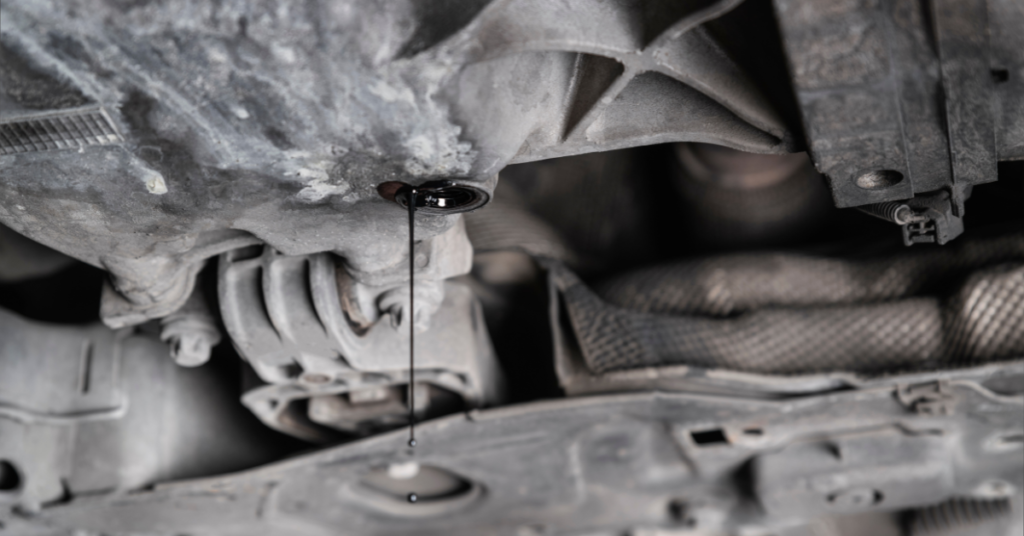
The P0430 Dodge code in vehicles is an indication of a malfunction in the catalytic converter’s efficiency on Bank 2.
It is a specific diagnostic trouble code (DTC) that is stored in the vehicle’s engine control module (ECM) when the converter’s performance falls below the predetermined threshold.
In this article, we will explore the possible causes, symptoms, and solutions for P0430 in Dodge vehicles.
Contents
Understanding the Catalytic Converter
Before diving into the details of P0430, it is important to understand the role of the catalytic converter in a vehicle’s exhaust system. The catalytic converter is an essential component designed to reduce harmful emissions produced by the engine.
It contains a catalyst that facilitates chemical reactions, converting toxic gases such as carbon monoxide and nitrogen oxide into less harmful substances.
The catalytic converter works by utilizing a combination of chemical reactions and precious metals, such as platinum, palladium, and rhodium, to convert harmful gases into less harmful ones.
The converter is strategically placed in the exhaust system to ensure that the gases pass through it, allowing the catalyst to facilitate the necessary reactions.
Your Dodge P0430 code is like a cryptic message waiting to be deciphered. Little do you know, the decoding skills you acquire may be transferable when it comes to addressing the P0420 code in Dodge.
Causes of P0430 Dodge
When the ECM detects that the catalytic converter’s efficiency on Bank 2 is below the expected level, it triggers the P0430 code. Several potential causes can lead to this issue, including:
Catalytic Converter Failure
A malfunctioning or deteriorated catalytic converter can result in decreased efficiency, triggering the P0430 code. Over time, the catalyst inside the converter can degrade due to exposure to high temperatures, engine misfires, or the accumulation of harmful substances.
This degradation can cause a decrease in the converter’s ability to convert gases effectively.
Oxygen Sensor Malfunction
Faulty oxygen sensors can provide inaccurate readings to the ECM, leading to a false detection of low catalytic converter efficiency. The oxygen sensors play a crucial role in monitoring the oxygen levels in the exhaust gases.
If these sensors are not functioning properly, they may provide incorrect data to the ECM, causing it to misinterpret the converter’s performance.
Exhaust Leaks

Leaks in the exhaust system can introduce excess oxygen, disturbing the catalytic converter’s performance. When there are leaks in the exhaust system, such as cracks in the pipes or faulty gaskets, unfiltered air can enter the system.
This additional oxygen can disrupt the chemical reactions occurring in the catalytic converter, leading to decreased efficiency.
Engine Misfire
A misfire in one or more cylinders can impact the catalytic converter’s efficiency. When the engine misfires, it fails to burn fuel properly, resulting in unburned fuel reaching the converter. This unburned fuel can overload the catalyst and lead to decreased efficiency.
Fuel System Issues
Problems with the fuel system, such as a clogged fuel injector or inadequate fuel pressure, can affect combustion and subsequently the catalytic converter.
If the fuel injectors are clogged or not delivering fuel properly, the combustion process may be incomplete, leading to increased emissions and decreased converter efficiency.
It is important to note that these causes are not exclusive, and multiple factors can contribute to the P0430 code. A thorough diagnosis is necessary to pinpoint the exact cause and implement the appropriate solution.
Symptoms of P0430
When the P0430 code is triggered, there are several symptoms that Dodge vehicle owners may experience. These symptoms can vary in severity depending on the underlying cause, and it is important to address them promptly to prevent further damage.
While troubleshooting the P0430 code in your Dodge, it’s worth acknowledging the broader context—this issue isn’t confined to a particular manufacturer.
Common symptoms of P0430 include:
Check Engine Light
The illumination of the check engine light is a primary indicator of a potential issue, including P0430. When the ECM detects a problem with the catalytic converter’s efficiency, it triggers the check engine light to alert the driver.
Reduced Fuel Efficiency
A faulty catalytic converter can lead to decreased fuel efficiency, resulting in frequent visits to the fuel station. When the converter is not functioning optimally, it may fail to convert the harmful gases efficiently, leading to an increase in fuel consumption.
Decreased Engine Performance
P0430 can cause a noticeable decrease in engine power and overall performance. As the converter’s efficiency decreases, it may restrict the flow of exhaust gases, resulting in reduced engine power and slower acceleration.
Unusual Odors
A malfunctioning catalytic converter may emit strange smells, such as a rotten egg odor, due to the accumulation of unconverted gases. This odor is a result of the converter’s inability to convert hydrogen sulfide into odorless sulfur dioxide.
It is important to note that these symptoms can also be indicative of other engine or exhaust system issues. Proper diagnosis is crucial to accurately identify the cause of the symptoms.
Diagnosing P0430
Proper diagnosis is crucial for resolving the P0430 code efficiently. Here are the steps typically followed by technicians to identify the underlying cause:
Scan for DTCs
Using a diagnostic scanner, the technician retrieves the stored DTCs, including P0430, from the ECM. This step helps to confirm the presence of the code and narrow down the potential causes.
The technician will also check for any other related codes that may provide additional information.
Inspect the Catalytic Converter
A visual inspection of the catalytic converter can reveal signs of physical damage, such as cracks or leaks. Additionally, the technician may measure the temperature before and after the converter to assess its efficiency.
If any physical damage or significant temperature difference is detected, it may indicate a problem with the converter.
Check Oxygen Sensor Readings
The oxygen sensor readings are analyzed to determine if they are within the expected range. If the readings are abnormal, further investigation may be required.
The technician may use a multimeter or specialized diagnostic tools to measure the oxygen sensor’s voltage and response time.
Perform Exhaust System Inspection
An inspection of the exhaust system for leaks, damaged pipes, or loose connections is essential to rule out any external factors affecting the catalytic converter’s performance.
The technician will visually inspect the exhaust system, paying close attention to the pipes, gaskets, and connections.
Evaluate Engine Performance
The technician may examine the engine for misfires, fuel system issues, or other related problems that could influence the catalytic converter’s efficiency. This evaluation may involve checking the spark plugs, ignition coils, and fuel injectors for proper functioning.
These steps provide a comprehensive approach to diagnosing the P0430 code. By following this process, technicians can identify the root cause of the issue and proceed with the appropriate repairs.
Solutions for P0430
Once the underlying cause of the P0430 code has been identified, appropriate measures can be taken to rectify the issue. The specific solution will depend on the root cause, but here are some possible approaches:
Catalytic Converter Replacement
If the catalytic converter is damaged or beyond repair, it may need to be replaced with a new one. It is recommended to choose a high-quality, OEM (original equipment manufacturer) converter to ensure optimal performance.
The replacement process may involve removing the old converter and installing the new one, ensuring proper alignment and connection.
Oxygen Sensor Replacement
Faulty oxygen sensors should be replaced with new ones to provide accurate readings to the ECM. The number of oxygen sensors in a vehicle depends on the make and model.
It is important to identify the specific sensor associated with Bank 2 and replace it accordingly.
Repair Exhaust Leaks
Any leaks detected in the exhaust system should be promptly repaired to prevent excess oxygen from interfering with the catalytic converter’s operation. The technician may use specialized tools, such as smoke testers or pressure gauges, to locate and fix the leaks.
This may involve replacing damaged pipes, gaskets, or connectors.
Address Engine Misfires

If engine misfires are identified, they should be addressed by fixing the underlying issues, such as replacing faulty spark plugs or ignition coils. The technician may also perform a compression test to check the health of the engine and ensure proper combustion.
Fuel System Maintenance
Proper maintenance of the fuel system, including cleaning or replacing clogged fuel injectors and ensuring adequate fuel pressure, can help optimize combustion and prevent catalytic converter inefficiency.
The technician may use specialized tools, such as fuel system cleaners or pressure gauges, to diagnose and address fuel system issues.
It is worth noting that performing these repairs and maintenance procedures may require technical expertise and specialized tools. Therefore, it is often recommended to consult with a qualified mechanic or automotive service professional.
They have the knowledge and experience to accurately diagnose and resolve P0430 and ensure the proper functioning of the catalytic converter.
Conclusion
The P0430 code in Dodge vehicles indicates a potential issue with the catalytic converter’s efficiency on Bank 2. Understanding the causes, symptoms, and solutions for this code can help Dodge owners take the necessary steps to address the problem promptly.
By diagnosing the root cause accurately and implementing appropriate solutions, the catalytic converter’s performance can be restored, ensuring optimal engine efficiency and reduced emissions.
FAQ
Q: What does the P0430 code indicate in Dodge vehicles?
The P0430 code indicates a malfunction in the catalytic converter’s efficiency on Bank 2 in Dodge vehicles.
Q: What are the possible causes of the P0430 code in Dodge vehicles?
The possible causes of the P0430 code in Dodge vehicles include catalytic converter failure, oxygen sensor malfunction, exhaust leaks, engine misfire, and fuel system issues.
Q: What are the symptoms of the P0430 code in Dodge vehicles?
The symptoms of the P0430 code in Dodge vehicles include the illumination of the check engine light, reduced fuel efficiency, decreased engine performance, and unusual odors.
Q: How is the P0430 code diagnosed in Dodge vehicles?
The P0430 code in Dodge vehicles is diagnosed by scanning for DTCs, inspecting the catalytic converter, checking oxygen sensor readings, performing an exhaust system inspection, and evaluating engine performance.



